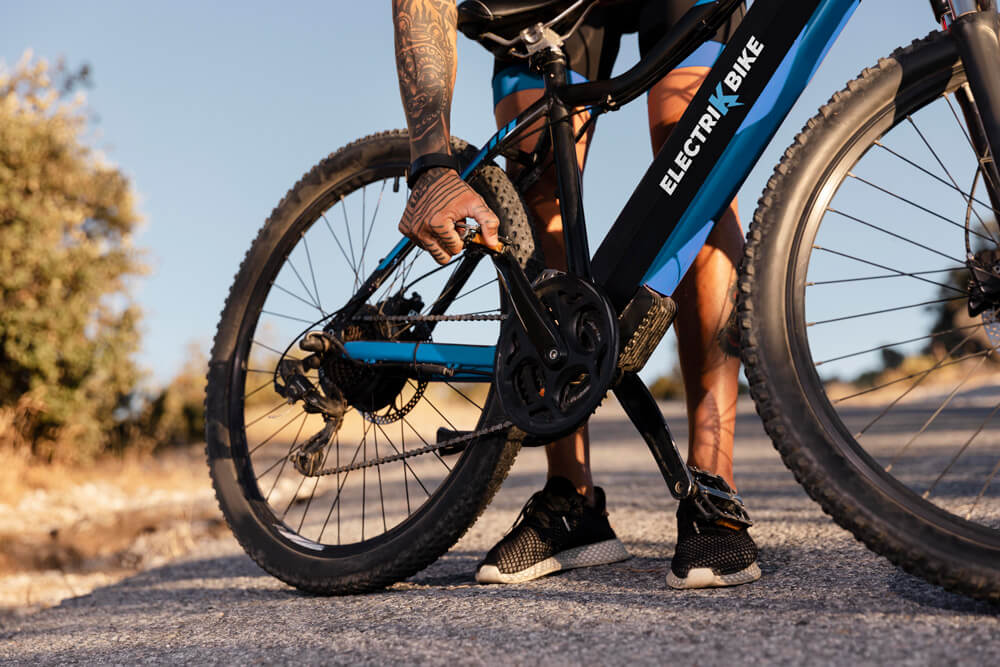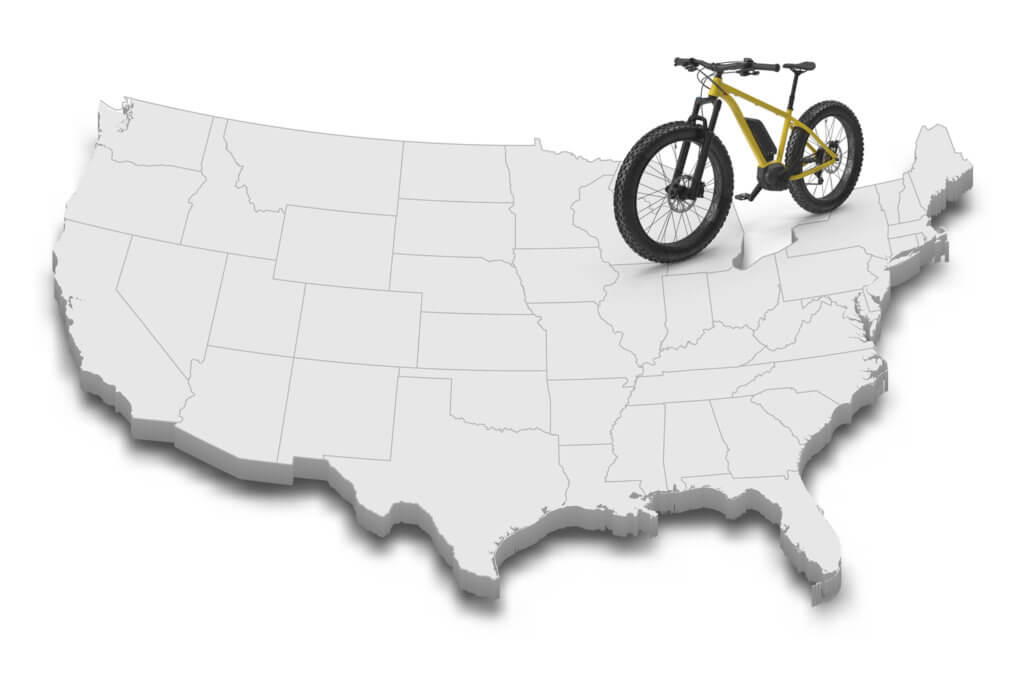Our life is quick-paced, and therefore, we need proper green vehicles. In the 21st century, in the eco-era, the best environmentally friendly solution is an electrically driven bike. When choosing a purchase, our natural tendency is to consider factors like cost, velocity, size, and upkeep. However, we must not forget to factor in our personal safety and our legal responsibilities. Electric iron horses are considered vehicles and as such must comply with all applicable legal requirements, including those pertaining to licensing, registration, number plates, and insurance, etc.
So, if questions like “Can I drive an electric bike without a license?” or “Do I need a license for an electric bike?” have been bothering you for quite a while, here’s a quick answer: it’s debatable. Issues with categorizing, distinguishing, and defining different types of environmentally friendly means of transport are at the heart of the dilemma. Many various names are used for them around the world and occasionally even within a single country.
Just continue to read, and you will get all the necessary info on how to drive your new eco-friendly iron horse in terms of the legislature properly.

What Law Defines Electric Vehicles in the USA?
There’s a ruckus caused by the spread of electric-powered vehicles: how can you tell an e-bike from a scooter, a moped, or an e-superbike? In the USA, this issue is somehow resolved by one simple phrase: low-speed electric vehicles. Because that’s what Congress has officially dubbed the vehicles we all know as “e-bikes.” There is a specific law that explains what it is. To cut the long story short, an e-bike is a two- or three-wheeled means of transport that may be ridden without pedaling and is propelled purely by an electric motor with a top speed of less than 20 miles per hour on a flat, paved surface and a rider weighing less than 170 pounds. The legislation that established this concept went into effect in December 2002. An important provision of this law stipulates that low-speed electric “iron horses” don’t fall under the category of motor vehicles. Toys, lighters, and eco-friendly bikes fall within the purview of the specific authority known as CPSF (a specific agency that takes care of the safety of various consumer products), not the Department of Motor Vehicles as many of you might have thought. As such, they are governed by the same rules as any other typical transport and even more so, rather than those pertaining to motor vehicles.
Different States Have Different Laws
A total of 44 US states have some kind of specific legal definition for bicycles that are powered by an electric current at the time of writing. There is almost no difference in the language of the criteria used by the 26 states that have opted to employ the three-tier categorization system for a bike that runs on electricity. The remaining 19 states have passed their own regulations, with some mirroring the 3-tier structure and others merging elements of it into existing law pertaining to mopeds and bicycles. This legislation tracker was created by People for Bikes and includes information on all e-bike bills that have been approved or presented in the House and Senate of each state.
Because of the many classifications of bicycles that are powered by an electric current used by different state legislatures, it’s important to read the fine print of any proposed legislation to know exactly what you can and cannot do in any given jurisdiction.
States that Define Electric Bikes by a Three-tiered Class System
There is a three-tiered classification system for e-vehicles of this kind in 26 states to distinguish between designs with differing velocity functionality. In these jurisdictions, of bicycles that are powered by an electric current are governed by almost comparable definitional and regulatory frameworks.
States that Define E-bikes by a Two-tiered Class System

States that Require a License
In the absence of separate legislation, at least six U.S. states now need a license to operate electrically powered bicycles: Alabama, New Mexico, Massachusetts, Missouri, Alaska, and North Dakota. Some states still require residents to get a license or registration for two-wheeled environmentally friendly means of transport, while others, like Utah and Vermont, have done away with such measures. Although the definition of an electrically driven means of transport may vary from state to state, the need for a valid driver’s license in places like Alabama and Alaska is consistent across the board.
When Do You Need a License to Ride E-bike?
We just mentioned the states that require specific documents for bicycles (including e-bikes).
If you possess an electric bicycle, the first step is to learn how the law defines such a vehicle and classify it into one of the categories. Many jurisdictions have laws pertaining to electric bikes, albeit not all of them do. As of now, the government applies the three-tiered framework to e-bikes.
You should know all the necessary info about your electric iron horse before hopping in the saddle. Electric bicycles sold in the US must, in most cases, have motors of 750 watts or less, comply with the aforementioned speed regulation constraints, and have functional pedals.
In the case of rules pertaining to a bicycle, for example, you may find them tedious. Nonetheless, these characteristics are what distinguish e-bikes from mopeds and small motorcycles, making them easy to operate, license-free, and accessible without the typical motor vehicle hoops to go through.
Is There an Age Limit for Driving an Electric Bike?
Every single jurisdiction has its own minimum age limits for using a two-wheeled pedaled e-vehicle. Certain nations allow citizens of all ages to ride electric iron horses under the condition that the vehicle corresponds to all the necessary safety regulations.
Further, you’ll find extensive research on the legal cycling age in various states.
There is no legal age restriction in the US for the use of an e-bike. The usage of the latter in public places is not governed by federal law, but in certain states in the United States, additional guidelines have been laid forth that may or may not take into account age limitations.
However, the use of Class 3 e-bikes is restricted to riders under 16 in places like Arkansas, Alabama, California, Colorado, Connecticut (needs a helmet for all riders regardless of age), Illinois, Iowa, Kansas, Washington, etc.
A similar regulation is in place in states like Georgia and Indiana, but the legal age to participate is set at 15.
Hawaii’s legal system is notoriously complex. There is a law in place requiring all electric bikes on the island to be registered. Now, here’s where things get complicated: in Hawaii, you have to be at least 18 years old to register an electrically powered bike, but you are allowed to ride one at the age of 15.
It means that a 15-year-old may only ride this kind of transport in public if an adult in his or her home has previously registered the bike.
Riders of any age may enjoy the thrill of an environmentally friendly ride in some different states, including Arizona, Delaware (here, no matter in which status you travel, as a rider or as a passenger, if you are under 18, you must have your helmet on), Florida, Kentucky, Nebraska, and a few more.
Some jurisdictions, like Alaska and Tennessee, prohibit minors under the age of 14 from riding this type of vehicle.

The legal age to ride this new eco-friendly transport in North Carolina and Pennsylvania is 16.
Additionally, it is recommended that you maintain contact with local authorities as they will be the most up-to-date resource for information on any green vehicle regulations in your region.
License Requirements in Other Countries
Records of the earliest e-transport use may be found throughout Europe. Nevertheless, there is still substantial evidence of eco-friendly vehicle use in several EU nations. In general, the European Union’s directives on bikes that are powered by an electric current are liberal. Moreover, there is no tax on such vehicles in any of the areas, but you must still adhere to all local traffic laws.
In Europe, they distinguish four main categories of bicycles powered by an electric current. All of them are broken down into subsets depending on their level of sophistication and engineering in Europe.
L1e-A electric bikes can reach speeds of up to 25 kilometers per hour and generate up to 1000 watts of electricity. They have a throttle and a pedal assist. It’s convenient to be able to toggle between the two when on the go.
L1e-B electric bikes: These ones can reach speeds of up to 45 kilometers per hour and produce up to 4000 watts of electricity. A common misconception about this kind of transport is that it can’t work without the pedal-assist feature. This is not just true for environmentally friendly iron horses but for any vehicle that uses only two wheels.
At last, we have the L2e and L6e categories. Both the maximum legal velocity and the required minimum power output are identical to those of L1e-B machines. Conversely, L2e is valid for three-wheeled types, and L6e is valid for four-wheeled ones.
The abovementioned categories of electrically run motorcycles are mandated by the EU and must be followed by all member states. While each member state of the European Union has its own set of regulations, they all adhere to the common or comparable standards listed below.
- Riders have to indicate a turning maneuver with their hands.
- One hand must always remain on the steering wheel, and the other may be used for signaling.
- Cycle lanes are open to cyclists. However, there should be specified zones where riding is permitted if the nation does not.
- There is a strict ban on using electric two-wheeled pedaled vehicles for transporting bulky items.
Other Important E-bike Regulations and Laws
Among the needs for the license, there is one specific regulation that is applied almost everywhere. We are talking about helmet requirements.
It would be pointless to mention criteria here when they may change according to legislation put out by a local government since head protection rules vary depending on the location. Those jurisdictions that do mandate head protection often do so only for drivers and passengers under a specific age, often 18. In certain territories, even users of electrically driven bikes are obliged to wear protection similar to those used for motorcycle riders.
Having protection on is strongly recommended at all times. Putting on head protective gear while riding is a good thing to do. Especially considering the less-than-ideal results you’ll get if you don’t. Riding an electrically powered transport at speeds of up to 28 miles per hour comes with its own set of hazards, and we should all exercise care while doing so.

Conclusion
Do you need a license to ride an electric bike? Legislators around the country are still trying to define e-vehicles and establish a procedure that will regulate their use in their own districts, hence the legal framework and licensing demands for these new e-vehicles are always changing. With a valid driver’s license, being at least 18 years old, and using protective headgear, you may probably ride your e-bike freely and safely. However, this is not set in stone, and it is your responsibility to read and remember the local rules and legal act before venturing out on your e-iron horse on public roads or trails.
